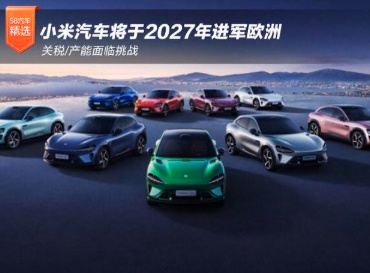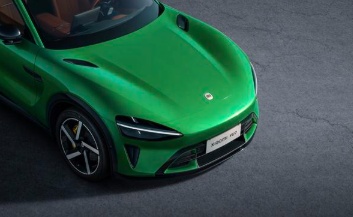Xiaomi Cars to Enter Europe in 2027 Facing Tariff/Production Capacity Challenges
In less than two years since Xiaomi began making cars, it has already stirred up quite a wave in the Chinese automotive market. As the Xiaomi YU7 and Xiaomi SU7 enjoy strong sales domestically, Lu Weibing, Partner and President of Xiaomi Group, recently revealed that Xiaomi plans to officially enter the European electric vehicle market in 2027, further expanding its global footprint. The tech giant’s globalization strategy is about to enter a new phase of exporting its "full ecosystem of people, cars, and homes."

This strategic plan is supported by impressive financial performance. The financial report shows that in the second quarter of this year, Xiaomi's revenue reached 116 billion yuan, a year-on-year increase of 30.5%, hitting a record high; adjusted net profit was 10.8 billion yuan, soaring 75.4% year-on-year, surpassing the 10 billion yuan mark for two consecutive quarters.
Among them, the automotive business became Xiaomi's biggest highlight in the second quarter. Revenue from smart electric vehicles and innovative businesses reached 21.3 billion yuan, a year-on-year increase of 234%, with the automotive business contributing 20.6 billion yuan. New car deliveries for the quarter totaled 81,302 units, and cumulative deliveries had exceeded 300,000 units as of July.
What is more noteworthy is the optimization of the financial structure. In the second quarter of this year, Xiaomi Auto's gross profit margin reached 26.4%, surpassing that of smartphones (11.5%) and IoT business (22.5%) for the first time; moreover, the operating loss of the automotive business narrowed to 300 million yuan, a significant improvement from 500 million yuan in the first quarter, with profitability expected in the second half of the year.
It should be noted that the European market is not an uncharted territory for Xiaomi. Data from the second quarter shows that Xiaomi's smartphone market share in Europe reached 23.4%, surpassing Apple for the first time and ranking second overall. In countries such as Spain, Xiaomi has long held the top position.

In addition, Xiaomi has established a research and development center in Europe and has recruited several prominent automotive talents, including Rudolf Drittich, former General Manager of BMW's Limited Edition Models Division and current Head of Xiaomi Automobile's European R&D Center; Jannis Hellwig, former BMW FE Performance Management and Simulation Supervisor, who has also joined the team; as well as Ricard Aiguabella Macau, former Ferrari F1 Aerodynamics Expert, among other professionals.
Kai Langer, Head of Design for BMW’s i Series, recently announced on LinkedIn that after working at BMW Group for over twenty years, he officially joined Xiaomi on August 1. Other reports indicate that Xiaomi plans to incubate a new automotive design center in Europe, but it is not yet known whether Kai Langer will join this center.

Xiaomi’s decision to choose Europe as the first stop for its electric vehicle overseas expansion is clearly based on an in-depth analysis of the local market. Europe is one of the world’s most mature electric vehicle markets, with consumers who have a strong environmental consciousness. This presents both opportunities and challenges for Xiaomi. Especially at this stage, the European Union imposes high tariffs on electric vehicles imported from China, including a basic 10% import tax and an additional anti-subsidy tariff of about 35% to 38%. On the other hand, Xiaomi’s current best-selling model, the YU7, is facing a severe production shortage, with domestic customers already waiting up to a year for delivery. How to resolve the subsequent production capacity bottleneck has also become a pressing issue.
In summary, if Xiaomi wants to succeed in the European market, it must find effective strategies to address challenges such as tariffs and production capacity.
【Copyright and Disclaimer】The above information is collected and organized by PlastMatch. The copyright belongs to the original author. This article is reprinted for the purpose of providing more information, and it does not imply that PlastMatch endorses the views expressed in the article or guarantees its accuracy. If there are any errors in the source attribution or if your legitimate rights have been infringed, please contact us, and we will promptly correct or remove the content. If other media, websites, or individuals use the aforementioned content, they must clearly indicate the original source and origin of the work and assume legal responsibility on their own.
Most Popular
-

EVA Morning Prices on September 12: Most of the Market Holds Steady, Highest Rise of 50 Yuan
-

Vynova's UK Chlor-Alkali Business Enters Bankruptcy Administration!
-

[PET Weekly Outlook] Polyester Bottle Chips Expected to Oscillate and Warm Up with Costs Today
-

Nissan Cuts Production of New Leaf EV in Half Due to Battery Shortage
-

Case Study | Clariant AddWorks™ Additives Solve Plastic Yellowing Problem






